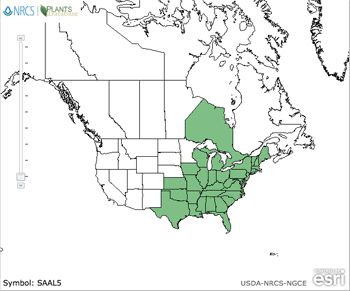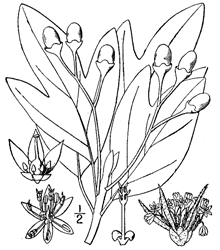SASSAFRAS ALBIDUM
| Botanical name: | Sassafras albidum |
| Common name: | sassafras |
| Group: | dicot |
| Family: | Lauraceae |
| Growth type: | shrub/tree |
| Duration: | perennial, deciduous |
| Origin: | native |
| Range in New Jersey: | statewide |
| Plant height: | 24 - 75’ |
| Foliage: | leaves are 0-3-lobed, rarely 5-lobed |
| Seed: | in summer |
| Habitat: | dry open acidic soils |
| Heritage ranking, if any: | n/a |
| Distribution: |  |
| Misc. | Common tree in the region, readily distinguished by its polymorphic leaves, some entire and unlobed, others 2-lobed (like a mitten), and others 3 (rarely 5 ) -lobed. The blue, fleshy fruits are seldom encountered, being quickly eaten by birds upon ripening. In the past, the roots were used to flavor tea and root beer. A number of mammals browse on sassafras including deer, porcupines, rabbits, black bears, beavers, groundhogs. Fruits are consumed by numerous bird species such as kingbirds, quail, flycatchers, turkeys, catbirds, woodpeckers, vireos, and mockingbirds. USDA fact sheet |
| Credit: USDA United States Dept. of Agriculture, Natural Resources Conservation Service data base |
|

